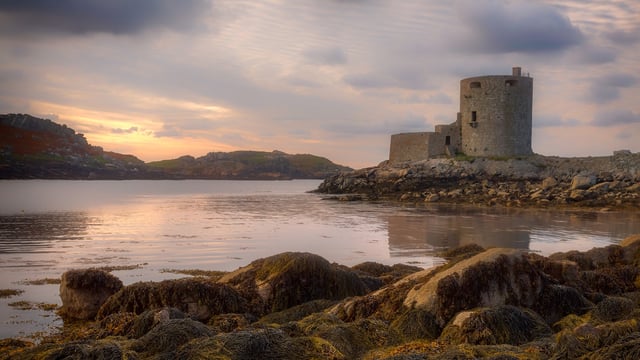Cornwall & the Isles of Scilly
Art, History & Archaeology Sites & Museums
Cornwall holds a unique place in England, many native Cornish maintain that they are a nation distinct from the English altogether. Located at Britain’s southwestern tip, Cornwall has a rich collection of prehistoric monuments, from the settlements of Carn Euny and Chysauster to the stone circles at Boscawen-Un and the Hurlers. Probably the county’s most famous medieval site, Tintagel Castle, is the legendary birthplace of King Arthur, with the Arthurian connection contributing to popular perceptions of Cornwall as a land of mystery and enchantment. Other castles include the Norman fortification at Restormel and those at Saint Mawes and Pendennis, built in the reign of King Henry VIII to defend against French or Spanish attack. Possessing more coastline than any other county in the United Kingdom, Cornwall’s rich sea-faring heritage is displayed at the National Maritime Museum Cornwall.
Featured Destination

An Archaeological Archipelago:
Things to see on the Isles of Scilly
Archaeology & History Sites in Cornwall
Carn Euny Ancient Village
An Iron Age village inhabited from the 5th century BC until at least the 4th century AD. What we see at the site today dates to the later phase of the village. The village is made up of a series of interlocking courtyard houses typical of the Iron Age in west Cornwall and best seen at nearby Chysauster Ancient Village. The most intriguing feature of this site is a large, well preserved underground passage with a sizeable underground chamber – both of which are made from stone.

Chysauster Ancient Village
Chysauster is the best preserved Iron Age courtyard house settlement in the country. This very well preserved village comprises eight courtyard stone houses that are typical of Cornwall and the Scilly Isles. Four of these houses are on either side of a well defined ‘street’. The layout of each stone house is very clear, each had a central, open courtyard that was surrounded by a number of rooms that probably had conical, thatched roofs. There is also evidence of garden plots, fields and paddocks.

Merry Maidens Stone Circle
In open farmland on the road from Newlyn and Penzance to Land’s End is a cluster of ritual and funerary monuments dating to the late Neolithic and early Bronze Age. The main attraction is a modest but perfect stone circle known as the Merry Maidens. Nearby are a few standing stones, the tallest still standing menhirs in Cornwall, and a partly destroyed burial chamber. As with many megalithic sites in the area, the stone circle and standing stones here get their names from a local legend.


Saint Michael’s Mount
Occupation of the tidal island goes back to the Neolithic, although it is the fourteenth century priory church and castle dramatically constructed on rock that draws peoples attention today; the Cornish equivalent of Mont Saint-Michel in Normandy. Owned and still lived in by the St Aubyn family, Saint Michael’s Mount is managed by the National Trust. During the summer the castle provides a backdrop for a wide range of activities and events, suitable for all ages.

Tregiffian Burial Chamber
One the side of the B3315 road, about 100 m west of the car park at Merry Maidens stone circle, is a partly preserved late Neolithic burial chamber. What we see at the site today is a walled and roofed entrance passage which would have lead into a central chamber, which was covered by the road some time in the mid 1800s. In front of the entrance is a slab with cup and ring markings. This is a replica, the original is in the Royal Cornwall Museum. The first excavations were conducted in 1871. Pits were found, filled with ash and bone remains, suggesting cremation.


Join English Heritage and/or National Trust
Some attractions listed on this page are managed by English Heritage or the National Trust. Besides supporting their work, joining these organisations offers you many benefits. Read about the benefits of joining English Heritage and/or the National Trust. Non-residents of England can benefit from a Pass for Overseas Visitors.
New memberships, paying by direct debit, get 15% off with code EHAFF2024 until 31 Dec. 2024.
Museums & Art Galleries in Cornwall
National Maritime Museum Cornwall
This relatively new museum, opened in 2003, aims to promote the maritime heritage of Cornwall. Although the museum focuses on the more recent maritime past, and the significance of boating in Cornwall today, curators are regularly involved in projects that explore much older maritime history. In 2012 and working with archaeologists from Exeter University the museum reconstructed a Bronze Age boat.

Royal Cornwall Museum
Founded in 1818, the Royal Cornwall Museum promotes the natural and cultural history of Cornwall. As the main repository for archaeological artefacts, the museum has an impressive collection and series of displays on the history of Cornwall. These start with the Palaeolithic and extend up to the very recent past. The local archaeology collection has been enhanced by gifts from Cornish benefactors. Also on display then is an impressive collection of ancient Egyptian, Greek and Roman artefacts.










